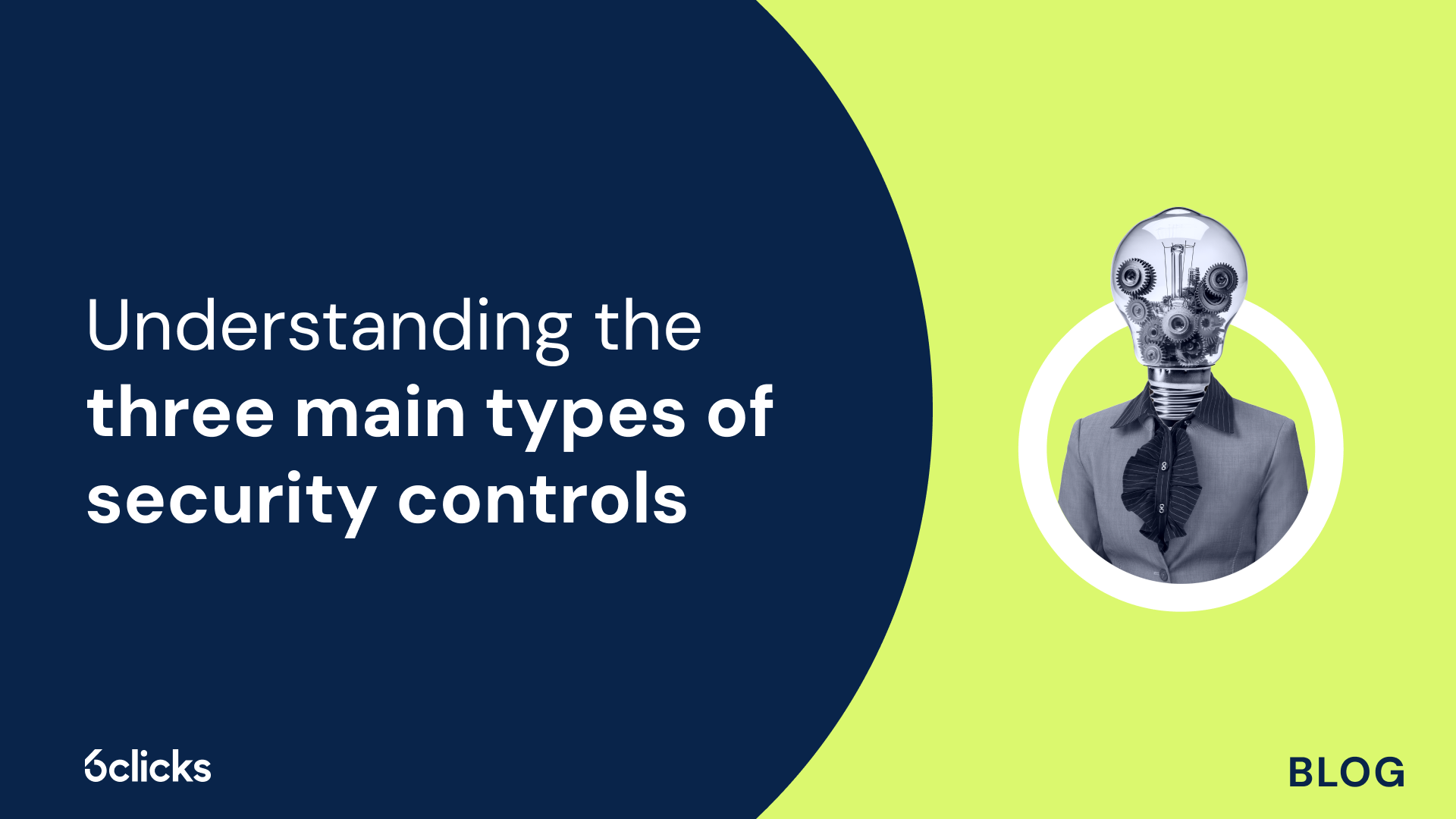Understanding the three main types of security controls
As digitalization continues to transform the modern business landscape, safeguarding sensitive information is critical to the success of organizations. Regardless of their size, organizations face more sophisticated and frequent threats such as data breaches and cyberattacks. Tackling these challenges demands well-planned and effective defense measures. Central to these efforts are three categories of security measures: preventive, detective, and corrective. This article explores each type and its collective importance in securing an organization’s critical assets.
What are security controls?
Security controls are measures, policies, and procedures implemented to protect an organization's information systems, data, and assets. They aim to reduce vulnerabilities, prevent unauthorized access, and ensure the confidentiality, integrity, and availability (CIA) of critical information. Let’s dive into the three main types of security controls and understand their roles in a comprehensive cybersecurity strategy.
1. Preventive security controls
Preventive controls are proactive measures designed to stop security incidents before they occur. These controls focus on reducing the likelihood of a breach by addressing potential vulnerabilities and enforcing policies that restrict unauthorized activities.
Examples of preventive security controls:
- Access control systems: Enforce role-based access, ensuring only authorized personnel can access sensitive data or systems
- Firewalls: Block unauthorized traffic from entering or leaving a network
- Antivirus software: Detect and quarantine malicious files before they cause harm
- Data encryption: Secure sensitive information and ensure it remains unreadable without proper decryption keys
- Security awareness training: Educate employees on cybersecurity best practices, such as recognizing phishing attempts
Preventive controls act as the first line of defense, helping organizations to minimize risks and avoid costly incidents. By reducing the attack surface, they play a crucial role in maintaining security resilience.
2. Detective security controls
Detective controls aim to identify and alert organizations of security incidents in real time or after they occur. While these controls do not prevent incidents, they are crucial for recognizing and mitigating threats promptly.
Examples of detective security controls include:
- Intrusion Detection Systems (IDS): Monitor network traffic to identify suspicious activities or potential breaches
- Security Information and Event Management (SIEM) Systems: Analyze logs and events from multiple sources to detect anomalies
- Audit logs: Keep detailed records of user activity to trace unauthorized actions
- Surveillance systems: Use CCTV or digital monitoring to identify physical security breaches
- Network monitoring tools: Identify unusual patterns, such as spikes in data transfer that might indicate a data exfiltration attempt
Detective controls are essential for rapid incident response. Early detection allows organizations to contain threats before they escalate, minimizing damage and reducing downtime.
3. Corrective security controls
Corrective controls come into play after a security incident has occurred. Their purpose is to restore systems and data to normal operation and prevent the recurrence of the same threat.
Some examples of corrective security controls are:
- Incident response plans: Outline steps to take during a breach to mitigate damage and recover swiftly
- Data backups: Ensure data can be restored in the event of loss or corruption
- Patching vulnerabilities: Update software or systems to fix known security flaws
- Disaster recovery plans: Establish protocols to resume operations following a major incident
- Forensic analysis: Investigate the root cause of the breach to prevent similar incidents in the future
Corrective controls help organizations bounce back from incidents with minimal disruption. They also play a vital role in strengthening defenses against future threats by addressing gaps in security.
Integrating the three types of security controls
A robust cybersecurity strategy requires a balance of preventive, detective, and corrective controls.
For comprehensive security, organizations must implement all three types of security controls together to enable proactive risk management. Preventive controls serve as barriers against potential incidents, while detective controls act as watchdogs that instantly catch breaches or anomalies that do occur, and finally, corrective controls are in charge of damage control and maintenance, restoring systems, data, and operations affected by the incident and keeping similar occurrences from happening again.
By understanding, implementing, and integrating these controls, organizations can effectively mitigate risks, detect threats, and recover from incidents, ensuring the protection of critical assets and maintaining operational continuity.
Get started with 6clicks
6clicks simplifies the implementation and management of security controls through its powerful cyber GRC platform and AI-driven capabilities. Here’s how 6clicks can support your cybersecurity efforts:
- Policy and control management: Set up and organize your controls within the Controls module. Create control responsibilities to facilitate and verify control implementation.
- Continuous control monitoring: Conduct manual or automated control tests to gain advanced insights into control performance and streamline evidence collection for compliance.
- AI-powered compliance mapping: Use our AI engine, Hailey to perform a gap analysis and map your security controls to regulatory requirements within seconds, quickly determining your level of compliance.
- Incident management: Capture, categorize, action, and track incidents through comprehensive incident registers with custom fields, workflows, and incident reporting forms.
- Audit and assessment: Validate control effectiveness and demonstrate regulatory compliance by conducting internal audits. Accelerate the audit process using turnkey templates and automated responses generated by Hailey.
With 6clicks, organizations can optimize cybersecurity and focus on building resilience against evolving threats. Explore the platform and take the next step toward securing your business below:
Frequently asked questions
Why are security controls important?
Security controls are vital for protecting sensitive data, maintaining compliance with regulations, and safeguarding an organization’s reputation. They help prevent breaches, detect threats, and recover quickly from incidents.
How do I determine which security controls to implement?
Begin with a risk assessment to identify vulnerabilities and prioritize controls based on the potential impact of threats. Consider industry standards, regulatory requirements, and your organization’s specific needs.
Can security controls guarantee 100% protection?
No security system can provide absolute protection. However, implementing a combination of preventive, detective, and corrective controls significantly reduces risks and enhances resilience.
How often should I review my security controls?
Regular reviews are crucial. Conduct periodic audits, especially after incidents or changes in your IT environment. This ensures your controls remain effective against evolving threats.
What role does employee training play in security controls?
Employee training is a preventive control that enhances awareness and reduces human error—a common cause of security incidents.
Written by Heather Buker
Heather has been a technical SME in the cybersecurity field her entire career from developing cybersecurity software to consulting, service delivery, architecting, and product management across most industry verticals. An engineer by trade, Heather specializes in translating business needs and facilitating solutions to complex cyber and GRC use cases with technology. Heather has a Bachelors in Computer Engineering, Masters in Engineering Management, and a Doctorate in Information Technology with a specialization in information assurance and cybersecurity.










